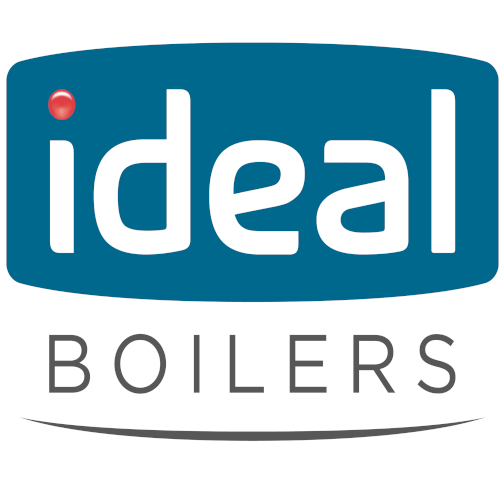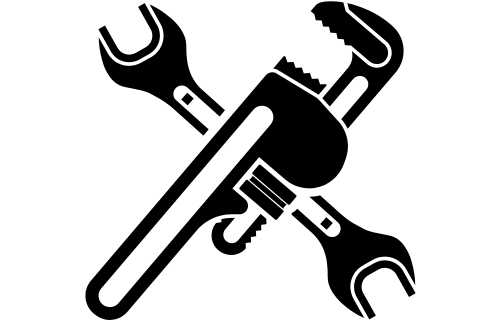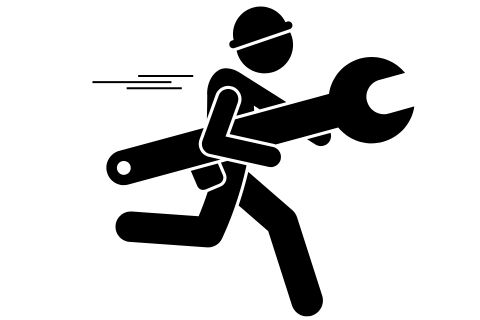L9 Ideal boiler fault code meaning & how to fix it
Is your Ideal boiler showing the L9 fault code?
What you do next will depend on the model of your Ideal boiler since the meanings have changed over time with the evolution of the Ideal boiler range, and this guide will help to determine why the Ideal L9 code is showing and what steps you need to take to fix it to get your central heating system back up and running.
This L9 boiler fault is likely to need a Gas Safe engineer.
Old inefficient boiler costing you money? Get new boiler quotes online in under 60 seconds.

What does the L9 Error mean on Ideal boilers?
For older models of Ideal boilers, the fault code L9 is an indication that the plate heat exchanger has been overheated.

Specifically, this fault code suggests that the plate heat exchanger is allowing hot gases to heat water without mixing in a condensing boiler. If the boiler senses that it is operating at too high a temperature, it will shut down.
For newer models of Ideal boilers, the L9 error code means that the printed circuit board (PCB) has a fault or is not configured properly. The PCB is responsible for controlling all electrical operations necessary to keep the boiler operating. Each step is checked with the PCB before the next step can occur, so if the PCB has a fault or is not configured properly, it cannot perform this function.
Time for a new Ideal boiler? Find all the prices for Ideal boilers here
What causes the L9 Error in an Ideal boiler
The Heat exchanger is damaged or blocked
For safe water heating, it is necessary to ensure that cool water flows freely to the heat exchanger unit. However, limescale and heating oil are two common causes of blockages that can build up naturally with prolonged boiler use.
Limescale, a chalky mineral deposit, can build up on the heat exchanger when water flows, especially if the water is “moderate” to “hard”. If limescale builds up on the heat exchanger, it can cause a blockage known as “kettling”, which can severely damage boiler components and must be addressed immediately.
The heating process can also produce central heating sludge, a thick mixture of dirt and rust that can block some parts of the system. The boiler filter is there to prevent this from happening. However, if the filter is not regularly maintained, it could overflow and stop working, leading to boiler problems such as tapping or scratching sounds.
Prolonged exposure to limescale and sludge can cause a cracked heat exchanger, which can damage other parts of the boiler unit and limit water flow.

How to fix if the Plate Heat Exchanger is Broken or Blocked
Your plumber can flush the system if the blockage is caused by limescale or heating oil.
This involves flushing the system with water and commercial cleaning agents to break the blockage.
They can choose to have the water drained using high pressure or use a chemical flush that relies on products being introduced.
These procedure costs will vary depending on how many radiators are installed in your house. However, an estimated price for a house with six radiators would be £400.
As a preventative measure, it is recommended that your boiler be treated once every five years. This will make your home more efficient and increase the life expectancy of your boiler.
The engineer will have to install a new heat exchanger if the heat exchanger has become too damaged to repair. This is often the case when limescale buildup has gone unchecked.
This service, which includes labour, costs an average of £550. It is the most expensive component in the boiler and more often than not it may be better to consider a new boiler replacement.
Water Pressure Not at the Correct Level
A cracked heat exchanger can cause water pressure to drop continuously, which is a sign that there is a leak, so ensure to check the pressure gauge in the first instance for low boiler pressure.
The water content of the system is what the pressure gauge measures. If water is lost through a crack or heat exchanger, the boiler won’t be able to supply enough water to maintain the required pressure.
If you suspect this is a particular boiler fault, regularly checking the pressure gauge is a good idea.
Fixing The Water Pressure Is Not at the Correct Level

An engineer will replace the component if it is caused by a heat exchanger crack that has sprung a leak.
If that is the case, they will determine the source of the leakage or obstruction to regular pressure.
The cost and time it takes to complete this task will vary depending on which parts need to be replaced.
A Fault in the Central heating System Pump
The central heating system pump is the component that circulates hot water throughout the house and returns any excess water to your boiler for heating. A low domestic hot water flow rate and low water pressure will give this away.
It is typically located outside the boiler, near the boiler or water tank, in conventional boilers. Combi boiler pumps are usually located inside the boiler or very near it.
The pump can become stuck or seized and stop water from flowing at the recommended pressure causing the L9 error code.
This can lead to the heat exchanger overheating if hot water builds up and there is no place for it to go.
Fixing a Fault with the System Pump
The engineer will inspect the pump to see if it has become stuck or is completely broken.
Repair costs are usually very low if a blockage can be easily removed.
If a complete replacement is required, labour and parts costs can be as high as £150 to £350, depending on your boiler model.

Incorrect Installation of the PCB (printed circuit board)
It is possible that your boiler was incorrectly connected after it had been installed or replaced with a PCB.
It could be, for example, that some connections are not possible, leading to an incomplete circuit.
The boiler will not be able to operate without the correct PCB, and this fault is likely to be obvious very soon after the work has been completed. Rarely, an engineer might have installed an incompatible PCB accidentally.
Fixing an Incorrect Installation of the PCB
You can contact the same person if your boiler has had recent work done or a new one installed to resolve this problem.
They will quickly be able to identify the areas where their installation is failing and fix it.
A Fault with the Boiler Chip Card
The PCB component is usually generic and compatible with multiple types of boilers. A boiler chip card (BCC) is necessary to ensure it works with your particular model.
The boiler unit won’t recognise the PCB if it doesn’t have a properly installed BCC. It will also not function correctly because it is dependent on this BCC.
An example of this is an organ transplant.
In order to avoid rejection, both the donor organ and recipient body must be matched up.
The BCC can have common faults, such as improper installation or becoming loose from vibrations in the boiler. However, the component could also stop working over time.
How to Fix a Fault with the Boiler Chip Card
The same engineer can correct any mistakes made by the BCC installer if it has been installed recently.
If the unit has become loose, they can move it around, but they also need to check the boiler for loose wiring or damaged connections.
They will replace it if it is broken. Most cases retail for less than £50
How can I fix my own Ideal boiler with an L9 error?

The Ideal L9 fault code is a sign that there is an issue within the boiler’s internal parts, and there aren’t any steps you can take at home to fix it legally and safely.
Although you can reset your Ideal boiler by using the control panel at the front, it is likely that the boiler has already identified an issue and will not continue its normal functioning.
You could risk causing it to run at unsafe pressures or temperatures, which could lead to leaks or even explosions.

Ideal boiler models that show L9 Error code
- Ideal Icos
- Ideal Isar
- Ideal Istor
If you have one of the following models, the L9 code refers to an unconfigured PCB:
- Ideal Logic MAX HEAT
- Ideal Logic + SYSTEM
- Ideal Logic MAX SYSTEM
Do I need a new boiler?
A faulty heat exchanger in an Ideal boiler is usually a sign that it’s time for a new boiler.
If there has been a build-up of sludge and limescale in the heat exchanger, you can guarantee that the rest of the boiler is too.
You can read our new boiler cost guide and get a replacement boiler in under 60 seconds including full installation and boiler finance if required.
Click get a quote now.

FAQ’S
Are there DIY solutions for addressing the Ideal L9 fault code before calling a Gas Safe engineer?
DIY solutions for addressing the Ideal L9 fault code are not recommended before consulting a Gas Safe engineer. The L9 fault typically indicates a serious issue within the boiler’s internal components, and attempting DIY fixes may lead to unsafe conditions or further damage to the boiler. It’s best to contact a qualified Gas Safe professional to diagnose and resolve the problem safely and effectively.
How common is the Ideal L9 fault code in Ideal boilers, and what are measures homeowners can take to stop it?
he Ideal L9 fault code occasionally appears in Ideal boiler models and can indicate issues such as overheating plate heat exchangers or faulty PCBs. While not among the most common faults, it warrants attention. Homeowners can reduce the risk by conducting regular servicing checks, ensuring good water quality to prevent limescale buildup, and following manufacturer guidelines for installation and servicing. These proactive measures help minimise the occurrence of the Ideal L9 fault code and extend the lifespan of the Ideal boiler.
Are there warranty or insurance options for repairs related to the Ideal L9 fault code, and how can homeowners ensure they’re protected?
Warranty or insurance options specifically covering repairs related to the Ideal L9 fault code may vary depending on the boiler’s warranty terms and insurance policies. Homeowners should review their boiler warranty documents and insurance policies to determine coverage for such faults. To ensure they are adequately protected, homeowners should consider comprehensive boiler insurance plans that cover a wide range of faults and breakdowns, including the Ideal L9 fault code.
Additionally, regular servicing of the boiler can help identify and address potential issues before they escalate into costly repairs, providing an added layer of protection for homeowners.